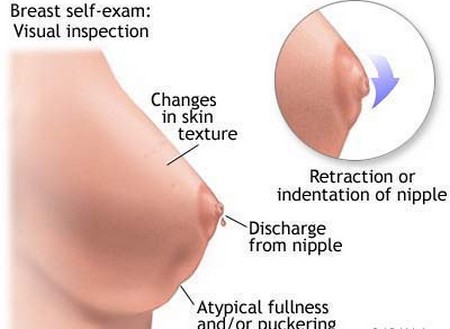siRNA-toting nanoparticles inhibit breast cancer metastasis
Researchers at Case Western Reserve University combined finely crafted nanoparticles with one of nature’s potent disrupters to prevent the spread of triple-negative breast cancer in mouse models.
The highly aggressive cancer subtype is difficult to manage and, currently, the FDA has no approved targeted treatments. But striking results from a new study, published in the journal Cancer Research make the researchers optimistic they have a potential game-changer for triple negative cancer and more.
“There are multiple targets within a cell,” said William Schiemann, professor of oncology at the Case Western Reserve School of Medicine and the Case Comprehensive Cancer Center, and a leader of the research. “With this technology, we can target any gene or any location, for other cancers, more diseases - potentially even immunology-based diseases.”
Regular injections of nanoparticles carrying siRNA silenced the gene that regulates expression of the protein β3 integrin. Expression of β3 integrin in the cell-development process called the endothelial-mesenchymal transition (EMT), is essential for the cancer to spread from its primary tumor.
Nearly 15 percent of breast cancers in the United States are triple negative, and the subtype is most prevalent among African-American women in their 20s and 30s
According to the National Cancer Institute, the five-year survival rate for women whose cancer is discovered early and contained to a primary tumor is 98 percent. But, the survival rate for those diagnosed with distant metastases plummets to less than 25 percent.
Overall estimates of breast cancer in the U.S. Women
In 2015, it is estimated that among U.S. women there will be:
- 231,840 new cases of invasive breast cancer (This includes new cases of primary breast cancer among survivors, but not recurrence of original breast cancer among survivors.)
- 60,290 new cases of in situ breast cancer (This includes ductal carcinoma in situ (DCIS) and lobular carcinoma in situ (LCIS). Of those, about 83 percent will be DCIS. DCIS is a non-invasive breast cancer and LCIS is a condition that increases the risk of invasive breast cancer. Learn more about DCIS and LCIS.)
- 40,290 breast cancer deaths
###
American Cancer Society. Cancer Facts and Figures 2015. Atlanta, GA: American Cancer Society, 2015.
 To try to tackle metastasis, Schiemann teamed with Zheng-Rong Lu, the M. Frank and Margaret Domiter Rudy Professor of Biomedical Engineering at Case Western Reserve, Jenny Parvani, now a postdoctoral investigator, PhD student Maneesh Gujrati and undergraduate student Margaret Mack.
To try to tackle metastasis, Schiemann teamed with Zheng-Rong Lu, the M. Frank and Margaret Domiter Rudy Professor of Biomedical Engineering at Case Western Reserve, Jenny Parvani, now a postdoctoral investigator, PhD student Maneesh Gujrati and undergraduate student Margaret Mack.
Lu’s lab has been developing lipid-based nanoparticles to deliver medicines to specific targets in the body for a decade. Lipids include fats and oils, but these organic molecules are also building blocks in cell structures and functions.
Schieman’s lab investigates ways to manipulate the EMT process. He suggested they target the β3 integrin gene with siRNA, short for small interfering RNA or silencing RNA.
ECO withstands degradation and remains cloaked from the body’s immune system while circulating in the blood. ECO induces endosomes to wrap and transport it inside a cancer cell. The particle’s makeup prevents entrapment in the endosomal membrane and digestion by enzyme-packed lysosomes.
The nanoparticles are coated with RGD peptide that draws them to the gene that controls expression of β3 integrin. When attached to the gene, TGF-β, the nanoparticle releases siRNA, which jams the machinery.
U.S. Breast Cancer Statistics
- About 1 in 8 U.S. women (about 12%) will develop invasive breast cancer over the course of her lifetime.
- In 2015, an estimated 231,840 new cases of invasive breast cancer are expected to be diagnosed in women in the U.S., along with 60,290 new cases of non-invasive (in situ) breast cancer.
- About 2,350 new cases of invasive breast cancer are expected to be diagnosed in men in 2015. A man’s lifetime risk of breast cancer is about 1 in 1,000.
- Breast cancer incidence rates in the U.S. began decreasing in the year 2000, after increasing for the previous two decades. They dropped by 7% from 2002 to 2003 alone. One theory is that this decrease was partially due to the reduced use of hormone replacement therapy (HRT) by women after the results of a large study called the Women’s Health Initiative were published in 2002. These results suggested a connection between HRT and increased breast cancer risk.
The study adds to growing evidence that a lack of β3 integrin stops production of migrating cancer cells.
In this study, five mice with a mouse version of triple-negative breast cancer were injected with particles every five days for 14 weeks. Compared to control mice, the treated mice’s tumors shrunk significantly, but more importantly, the treatment significantly inhibited metastasis.
Five mice with human triple-negative breast cancer received the same treatment, which produced the same results.
“The results were really, really surprising,” Lu said.
“I was shocked, actually,” Schiemann said. “We can do most anything invitro in the lab, but to do this in the live body of a mouse is a huge hurdle to clear.”
Four weeks after treatment was stopped, the treated mice remained tumor free while cancer continued to grow in untreated controls.
No significant difference in body weight across treatment groups and controls were found, indicating low toxicity of the treatments.
The researchers are further testing whether the delivery system is safe and seeking grants for dosing experiments and other steps toward clinical trials.
“We’re also looking at different genes, different therapies and more delivery platforms,” Lu said.
###
Kevin Mayhood
kevin.mayhood@case.edu
216-534-7183
Case Western Reserve University
Journal
Cancer Research